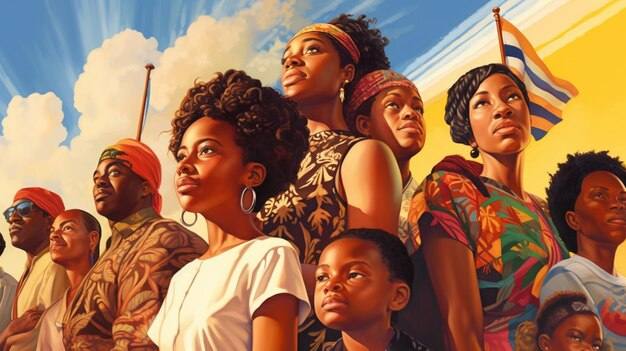There are many reasons for slavery, some of which are greed, military authority, cheap labor, African natural resources, and racism. Slavery wasn’t the work of American or European slave traders alone but involved the collaboration of some African leaders, chiefs, and tribesmen.
History records that about 7 million slaves from Africa forcefully arrived in the New World in the 18th century. This first shipping of slaves would begin the African deprivation of able men and women by slave traders.
Become an insider. Subscribe to our newsletter for more top trending stories like this!
Below, I outline 5 reasons for slavery you should know.
People Also Read: Halloween: 10 Interesting Costume Ideas for Black Families
5 Reasons for Slavery
Cheap Labour
When African slaves arrived in America in the 17th and 18th centuries, they were forced to work on plantations. These plantations include rice, tobacco, and cotton.
Since working on plantations was a difficult task, and it was expensive to hire poor Europeans who worked as servants, black people were made to farm the land.
Cotton, for instance, was a sought-after crop in America that was limitedly produced due to the difficulty of taking the seeds from the cotton fibers by hand.
However, slavery became the solution to the limited production of cotton and other crops. With the invention of the cotton gin, enslaved black people were used to produce more cotton.
Although the U.S. Congress abolished the slave trade in the 1800s, the indentured trade soured, increasing the number of black slaves. By 1865, the 13th Amendment officially abolished slavery in America, but black people remained poorer, uneducated, and segregated.
Extortion of Africa’s Minerals
The first slave traders who came to Africa through religious missions drastically discovered the rich resources of the continent. These resources include gold, diamond, bauxite, aluminum, and uranium, among others.
Upon discovering these minerals, the slave masters abandoned their religious mission to enslave Africans for their resources.
Barter Trade
In the 17th century, Britain, along with Holland and France, established colonies for the slave trade. Instead of capturing the slaves, they employed the barter trade technique, known as the triangular trade.
These countries sent manufactured goods to the shores of Africa in exchange for enslaved people. The slaves labored in rice, cotton, sugar, molasses, rum, and tobacco plantations.
African chiefs, tribesmen, and warlords who cooperated with slave masters received economic incentives. This process of slavery would go on to produce a violent and lawless atmosphere in Africa.
Physical Endurance
The first shipment of African slaves to Europe arrived in 1442. When the West Indies were discovered, African slaves were sent to replace the Arawak Indians. The problem was that the Indians could not perform well under harsh climate conditions and treatment. However, enslaved Africans could miraculously work under pressure in worse conditions and still produce results.
Become an insider. Subscribe to our newsletter for more top trending stories like this!
This discovery increased the need for more enslaved Africans in Europe.
Besides, England had about 550 coffee houses during the 18th century which was mostly patronized by people. But customers find the coffee and tea too bitter. That was when the search to produce sugar began.
However, European workers lack the physical strength to work in sugar plantations. Thus, the reason for slavery, among others, was the desire for sweet coffee and tea.
Racism
The notion that black people are inferior to whites or Caucasians played a part in slavery. While many ascertain racism was born out of slavery, the truth is otherwise.
Reasons for slavery likewise connected to the perceptions Europeans had about Black people.
Europeans feared, were intrigued, and repelled Africans because of the color of their skin. Some European writers asserted that blacks descended from apes or that a biblical curse had created the black race. They exaggerated the physical and mental differences between blacks and whites.
In the aftermath of the expansion of the Atlantic slave trade, theories of black inferiority abound. Slave traders and slave owners, after all, made money when Africans were viewed as different from the rest of humanity, or at least not fully human. In the eyes of Europeans, Africans were brutish, bestial, savage, and fit only for slavery.
People Also Read: Black History Month: Which Countries Celebrate in October?
There’s no doubt slavery destroyed African communities and impacted the continent’s economic status until today. While many opinions seek to explain the phenomenon, research explains the reasons for slavery in detail. The major reasons for slavery are outlined above.
Nearly 80% of consumers visit directories with reviews to find a local business. List your business for free in our exclusive Spotcovery Black-Owned Business Directory.
Spotcovery offers unique and fresh daily content on Black culture, lifestyle, and experiences. We talk about everything black, black people, black-owned and black-owned businesses. We also deliver authentic and relevant content that will inform, inspire, and empower you! The future of black media is critical to today’s black experience! Our primary audience includes African Americans, Africans, Afro-Caribbeans, and people of African heritage. Black culture is for the culture!
Become an insider. Subscribe to our newsletter for more top trending stories like this!





